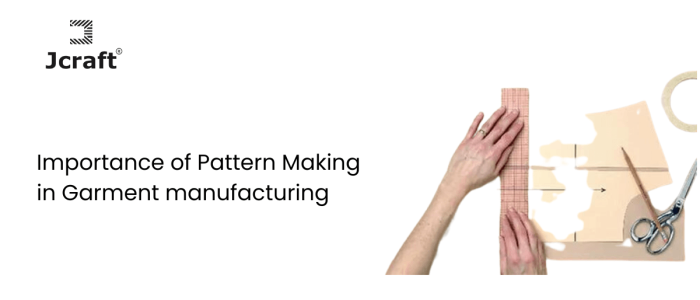Importance of Pattern Making in Garment manufacturing

Patterns are classified into two types: flat patterns and slopers. Flat patterns are used to generate the fundamental design of a garment, whereas slopers are used to create specific size patterns. Patterns can be created either by hand or by computer.
The pattern-making process begins with the collecting of body measurements. These measurements are used to develop a basic block pattern, which is then tweaked to obtain the desired garment shape. After creating the pattern, it can be used to cut cloth and sew outfits.
Pattern making is a complex and time-consuming procedure, yet it is necessary for efficient and accurate garment manufacture. Garment producers may save waste and ensure correct fit by generating accurate patterns.
Benefits of pattern making in garment manufacturing:
- Increased efficiency: Patterns can help to streamline the garment manufacturing process by reducing the amount of time and fabric that is wasted.
- Improved quality: Patterns can help to ensure that garments are made to the desired specifications, which can lead to improved quality and customer satisfaction.
- Reduced costs: Patterns can help to reduce costs by reducing the amount of fabric that is wasted and by improving the efficiency of the manufacturing process.
If you are thinking about launching a garment manufacturing business, you should understand the significance of pattern making. You can increase your company's efficiency, quality, and profitability by investing in the correct pattern creating tools and training.
Here are some of the skills that are essential for pattern making:
- Math skills: Pattern making requires a strong understanding of geometry and trigonometry.
- Drawing skills: Pattern makers must be able to accurately draw patterns on paper or on a computer.
- Measuring skills: Pattern makers must be able to accurately measure body dimensions.
- Sewing skills: Pattern makers must have some basic sewing skills in order to test their patterns and make adjustments as needed.
If you are interested in learning more about pattern making, there are many resources available online and in libraries. You can also find pattern making classes and workshops offered by local colleges and universities. With the right training and skills, you can become a successful pattern maker and play an important role in the garment manufacturing industry.
Here are some additional benefits of pattern making in garment manufacturing:
-
Increased creativity: Patterns can help designers to create more creative and innovative garments.
- Improved communication: Patterns can help to improve communication between designers, manufacturers, and sewers.
- Reduced risk: Patterns can help to reduce the risk of errors and mistakes in the garment manufacturing process.
Overall, pattern making is an essential part of garment manufacturing. By investing in the right pattern making tools and training, you can improve the efficiency, quality, profitability, creativity, communication, and risk reduction of your garment manufacturing business.
